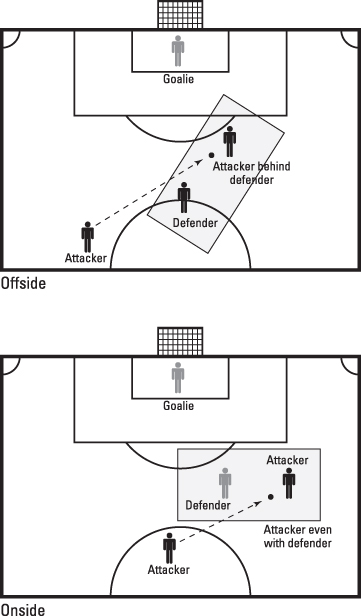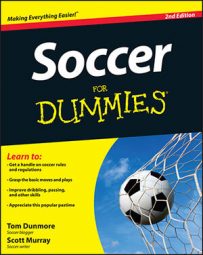A player is caught offside if he’s nearer to the opponent's goal than both the ball and the second-last opponent (including the goalkeeper) when his teammate plays the ball to him. In other words, a player can’t receive the ball from a teammate unless there are at least two players either level with him or between him and the goal or unless his teammate plays the ball backwards to him.
It’s not an offense in itself to be offside. A player is only penalized for being offside if he is deemed to be involved in active play. So a player can only be called offside if he is:
-
In the opposition’s half.
-
Interfering with play (that is, he’s part of the attacking move).
-
Interfering with an opponent (that is, he’s preventing the opponent from defending against the attacking move).
-
Gaining any advantage by being in that position.


